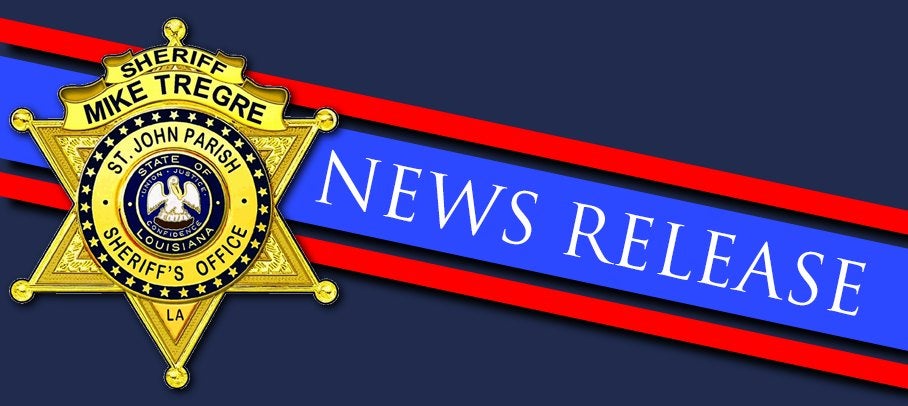WRDA passes the House, paves the way for water infrastructure improvements
Published 2:28 pm Friday, June 10, 2022

- Rep. Garret Graves
|
Getting your Trinity Audio player ready...
|
WASHINGTON, DC — The Water Resources Development Act of 2022 passed the U.S. House of Representatives this week, authorizing the construction of a major hurricane and flood protection project that benefits the River Parishes.
Co-authored by Congressman Garret Graves (R-Louisiana), WRDA is a bipartisan legislation that involves the development of flood control, ports, inland waterways, hurricane protection, coastal restoration and other water infrastructure improvements.
These investments include the $1.5 billion Upper Barataria Project, protecting the upper Barataria Basin parishes of Lafourche, St. Charles, St. John, Assumption, St. James, Jefferson and Ascension. According to Graves, Hurricane Ida highlighted the need for protection.
Trending
“In January, we secured $8 million to begin doing the engineering and design of a new levee called the Upper Barataria Basin that protects seven parishes. Highway 90 in the Des Allemands area is one of the areas where the Gulf of Mexico effectively has a direct path all the way up,” Graves said. “By providing hurricane protection along the bottom of the Bayou Des Allemands area, you save that entire basin from flooding.”
Graves noted that areas inside the existing hurricane protection systems experienced wind damage during Ida but were by and large saved from devastating storm surge flooding.
“We would have seen much better resilience or performance, and much less damages in the River Region, if hurricane protection had been in place,” Graves said. “I’ve brought about 50 members of Congress, Republicans and Democrats from around the country, down to South Louisiana in everything from helicopters to airboats, making them walk through it so they can understand exactly what it is we’re trying to protect and why we are trying to make these investments. We’re also making them understand how making these investments now ultimately saves taxpayer dollars in the long run.”
The Water Resources Development Act of 2022 also increases the funding to $36 million for drinking water and wastewater system improvements in St. John, St. James and Assumption parishes through the Corps Environmental Infrastructure Program.
Funding increases for water and wastewater systems were also approved for St. Charles, Terrebonne, Lafourche, Assumption, St. Mary, East Baton Rouge, Ascension and Livingston parishes.
According to Graves, another component of WRDA with local implications is the Comprehensive Lower Mississippi River Study. This provision will result in the release of $5 million in funding to begin a landmark study that will improve water management.
Trending
“We previously secured $5 million to have the Corps of Engineers look at an entirely different way of managing water everywhere from Missouri down to the Gulf of Mexico. We have had numerous years where we have had to open the Bonnet Carre Spillway and where we’ve had really high water levels in the Mississippi River all through the River Region. This is record-setting.” Graves said. “Instead of putting all this pressure on Louisiana, we can look at how to better use things like water control structures and reservoirs so you don’t have all these states just dumping water on us without having any skin in the game in terms of managing it.”
Other provisions of WRDA are as follows:
- Louisiana Hurricane Protection and Levee Improvements: $1.9 billion in projects authorized in St. Charles, Jefferson, Orleans, St. Bernard and Plaquemines parishes.
- Restoration of MRGO: Provision confirms that the project was intended to fully be the responsibility of the federal government.
- Comite Diversion: Requires the Army Corps to regularly report to Congress on the completion of the Comite project, which is now years behind schedule and over budget.
- Post-Katrina Loan Payments: Extends the deadline to repay loans stemming from post-Katrina flood protection projects, ensuring the state will be financially able to continue historic investments in new protection projects.
- Prioritization of Dredged Material:Requires the Corps to prioritize coastal restoration when dredging sediment from our navigation channels in our coastal area.
- Accuracy in Economic Value of Our Ports: Improves the accuracy of data on the commercial value of ports, concentrating on the value of commercial fishing and aquaculture harvest.
- Online Permit Filing: Amendment which requires the Corps to create an online portal to file, update and track permit applications.
- Building Back Stronger:Provision which will allow the Corps to build flood protection projects back to higher, stronger standards. This provision came directly from repeated damages to Grand Isle during the 2020 and 2021 hurricane seasons.
- Coordination between FEMA and the Corps: improves information sharing on the National Levee Database (NLD). As flood protection projects are finished, it is critical that they are added to the NLD as soon as possible to ensure that flood insurance policy holders see their premiums go down, especially with the rising rates under the harmful Risk Rating 2.0 policy.
- No Adverse Impacts from Levee Modifications: Amendment to ensure that potential modifications to levee systems will increase flood resiliency, reduced flood risk, and benefit individuals living behind the levee system in flood zones.
- Ensuring Appropriate Land Acquisition: Provision will require the Corps to require the lowest type of land acquisition to support Corps projects — decreasing costs and speeding up the completion of critical projects.
- Extension of Credit Transfer Authority: Extends the ability of the state to transfer the value of extra work it’s done on Corps projects to fulfill cost shares owed on other Corps projects.
- Corps Responsibility of Levee Subsidence: Ensures the Corps continues to meet expectations to rehabilitate existing levees in Louisiana to ensure they offer the maximum flood protection.
- Aquifer Working Group: Graves amendment includes farmers and agricultural lands in efforts to help with aquifer recharge efforts to ensure irrigation and sustainability of our farms and water sources.






